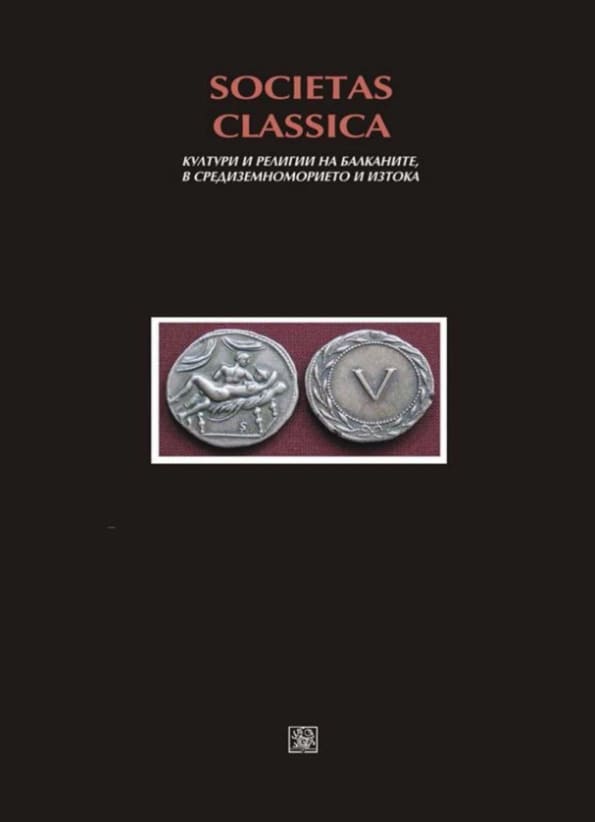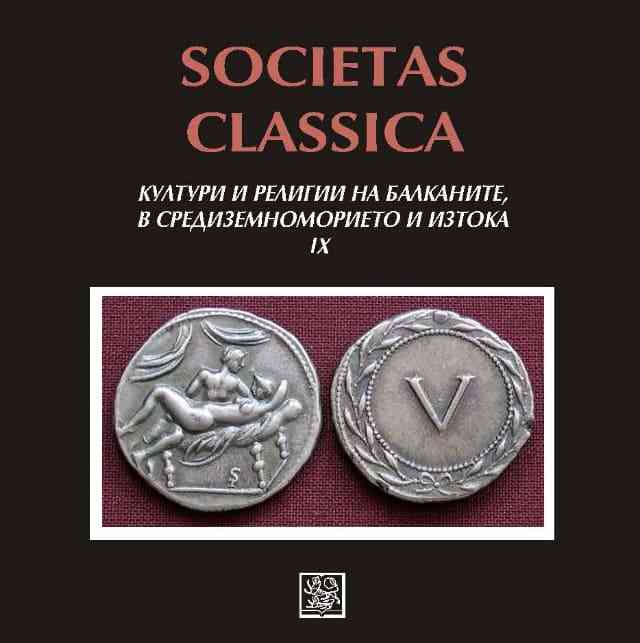Дневникът на свещеноиконом Тодор Пенков (1878–1959) – един забравен разказ за „Св. Пантелеймон“ в старозагорското село Ягода
Author(s): Rumyana Lecheva / Language(s): English,Bulgarian
/ Publication Year: 0
Keywords: Diary; Eparchial advisor; Union of the Priests; Orthodoxy
The reason for the present study is a manuscript found by me in the Metropolis library of Stara Zagora – Diary of the priest Todor Penkov, a longtime eparchial adviser to the Metropolitan of Stara Zagora Pavel. The handwritten memories are titled “History of St. Panteleimon diocesan rest home in the village of Yagoda”. Father Todor is a contemporary of the Liberation, founder of the Union of the Priests (1903) and of the Union of Orthodox Brotherhood (1926), priest, teacher, journalist and Russian translator, as well as founder of the Bulgarian Red Cross in Stara Zagora. He became a widower very early and devoted himself to his service as an Orthodox priest to the Bulgarian Orthodox Church. The manuscript contains direct observations, described perhaps with self-esteem, by the priest participating in the realization of this socially significant for its time project, but without any pretensions or pride. On the yellowed over the time pages we find accurate and precise documentary narrative that keeps the memory of the Orthodox clergy with pure thoughts and deeds, who were willing to give their personal funds for the work of the Bulgarian Orthodox Church. He kept records of each campaign among the priests of the diocese, without missing anything, describing truthfully and objectively. The manuscript reveals to us a clergyman, a zealous and worthy servant of God, who is bearer of remarkable Christian morality and moral principles. The realization of the church project does not encounter any difficulties and the “Diocese Brotherhood Home“ opens its doors after only one year. Its construction is funded entirely by the donations gathered in the diocese. The main donors are the parish priests. The construction of the Orthodox Church “St. Panteleimon“ is result of a new donation campaign, in which all priests from the diocese participated and each of them donated 1000 leva. The diocesan brotherhood home became an important cultural and educational center in which dozens of priests and citizens of the diocese increased their education in courses. During the training, special attention is given to the work of priests for the foundation of the Orthodox fraternities in the parishes, as well as to the organization of public places for religious and economic events in rural parishes. Father Todor’s diary shows that the system of self-financing and mutual assistance of church initiatives, imposed for the first time by the Metropolitan of Stara Zagora Methodius, proves its great vitality and economic prosperity in the realization of the project for the creation of the Eparchial Brotherhood in the village of Yagoda. In just two decades the church premises became a place for education and training of priests, but also a home that created fraternal friendships and mutual help. This is a good and successful example that awaits its followers nowadays.The reason for the present study is a manuscript found by me in the Metropolis library of Stara Zagora – Diary of the priest Todor Penkov, a longtime eparchial adviser to the Metropolitan of Stara Zagora Pavel. The handwritten memories are titled “History of St. Panteleimon diocesan rest home in the village of Yagoda”. Father Todor is a contemporary of the Liberation, founder of the Union of the Priests (1903) and of the Union of Orthodox Brotherhood (1926), priest, teacher, journalist and Russian translator, as well as founder of the Bulgarian Red Cross in Stara Zagora. He became a widower very early and devoted himself to his service as an Orthodox priest to the Bulgarian Orthodox Church. The manuscript contains direct observations, described perhaps with self-esteem, by the priest participating in the realization of this socially significant for its time project, but without any pretensions or pride. On the yellowed over the time pages we find accurate and precise documentary narrative that keeps the memory of the Orthodox clergy with pure thoughts and deeds, who were willing to give their personal funds for the work of the Bulgarian Orthodox Church. He kept records of each campaign among the priests of the diocese, without missing anything, describing truthfully and objectively. The manuscript reveals to us a clergyman, a zealous and worthy servant of God, who is bearer of remarkable Christian morality and moral principles. The realization of the church project does not encounter any difficulties and the “Diocese Brotherhood Home“ opens its doors after only one year. Its construction is funded entirely by the donations gathered in the diocese. The main donors are the parish priests. The construction of the Orthodox Church “St. Panteleimon“ is result of a new donation campaign, in which all priests from the diocese participated and each of them donated 1000 leva. The diocesan brotherhood home became an important cultural and educational center in which dozens of priests and citizens of the diocese increased their education in courses. During the training, special attention is given to the work of priests for the foundation of the Orthodox fraternities in the parishes, as well as to the organization of public places for religious and economic events in rural parishes. Father Todor’s diary shows that the system of self-financing and mutual assistance of church initiatives, imposed for the first time by the Metropolitan of Stara Zagora Methodius, proves its great vitality and economic prosperity in the realization of the project for the creation of the Eparchial Brotherhood in the village of Yagoda. In just two decades the church premises became a place for education and training of priests, but also a home that created fraternal friendships and mutual help. This is a good and successful example that awaits its followers nowadays.
More...


